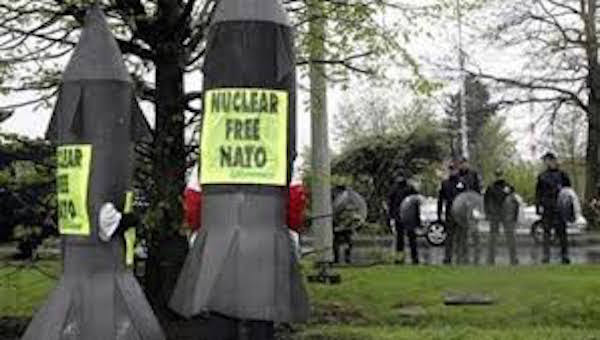 |
Dear Friends,
Against a backdrop of alarming new developments in nuclear weapons modernization, led by the United States and Russia, I and four other former Canadian Ambassadors for Disarmament, issued an urgent call for the Justin Trudeau government to take a leadership role in reversing this terrible downward spiral. Below is the full text of our commentary which appeared in the Ottawa Citizen on June 21, 2016. Disarmament ambassadors: Here’s how Canada can help eliminate nuclear weapons (Authors Marius Grinius, Peggy Mason, Paul Meyer, Douglas Roche and Christopher Westdal have each held the post of Canadian Ambassador for Disarmament, under four prime ministers.) Thirty years ago in Reykjavik, Iceland, U.S. President Ronald Reagan and Soviet Union President Mikhail Gorbachev – almost – made a deal that would have led to the elimination of all nuclear weapons. The discussions foundered on Reagan’s insistence that the U.S. be allowed to develop a ballistic missile defence system. Despite the 1986 failure, Reykjavik was one of the most important summits in history. A year later, the U.S. and Soviet Union signed the Intermediate Range Nuclear Forces Treaty (INF), for the first time eliminating an entire class of nuclear weapons. The Strategic Arms Reduction Treaty (START) was signed a few years later. Reykjavik projected the vision of a world without nuclear weapons. It showed how leaders could look beyond hostilities to build greater security for people around the world. The end of the Cold War quickly followed and hopes for global stability, if not peace, were raised. Fast forward 30 years. On April 17, The New York Times reported on its front page that the U.S., Russia and China are now “aggressively pursuing” a new generation of nuclear weapons. “The buildups threaten to revive a Cold War-era arms race and unsettle the balance of destructive force among nations that has kept the nuclear peace for more than a half-century,” the paper reported. William Perry, former U.S. secretary of defense, stated, “The danger of a nuclear catastrophe today is greater than during the Cold War.” Gorbachev, long retired, issued a statement lamenting “new types of nuclear weapons.” How did this happen? How did the world move from the “downward” trend of nuclear weapons to an “upward” shift? There’s plenty of blame to go around. The question that preoccupies us, as former Canadian ambassadors for disarmament, is what can be done to get nuclear disarmament back on track and, particularly, what can the new Canadian government do to move the process forward? Recently, United Nations High Representative for Disarmament Kim Won-soo told a parliamentary forum in Ottawa that Canada is uniquely placed to play a bridging role between the nuclear weapons states and the non-nuclear states in advancing nuclear disarmament. The Canadian Network to Abolish Nuclear Weapons, which has for many years pressed for government action, took this idea a step forward. The network recently issued a “Call to Action,” urging the Canadian government to sponsor a resolution this fall at the UN General Assembly “to negotiate a comprehensive, legally binding Convention that prohibits nuclear weapons and requires their verifiable elimination.” A UN process now underway in Geneva is laying the groundwork for a new international treaty prohibiting nuclear weapons. So if Canada acted, it would by no means be alone. A new humanitarian movement of countries deeply concerned about the catastrophic effects of the use of any one of the 15,800 nuclear weapons is growing. The stickler is NATO, which maintains, in its Strategic Concept, that nuclear weapons are the “supreme guarantee” of security. The new Canadian government, which clearly wants to advance the broad UN agenda, will have to decide if its allegiance to an outmoded NATO policy is stronger than its commitment to the Non-Proliferation Treaty, whose members have made an “unequivocal undertaking” toward the elimination of nuclear weapons. The government has shown signs of wanting to move forward. Recently, it hosted and co-sponsored with the Middle Powers Initiative a roundtable in Geneva of 22 governments, which pointed to the need for diplomacy, cooperation and high-level political commitments to reduce nuclear threats and reverse a new nuclear arms race. We believe Canada should extend this diplomatic work. Nuclear diplomacy still works, as the recent deal to stop Iran’s development of nuclear weapons has shown. A positive act would be for Canada to host a high-level meeting of countries that want negotiations to start immediately on a legal instrument to prohibit and eliminate nuclear weapons. Bringing together like-minded middle-power countries to forge a path to a nuclear weapons-free world would be a tremendous contribution to alleviating the new nuclear arms crisis. It could lead to Reykjavik II.
Thanks for everything you do for peace,
Peggy Mason Rideau Institute and Ceasefire.ca
|
|
Here’s how Canada can help eliminate nuclear weapons
-











